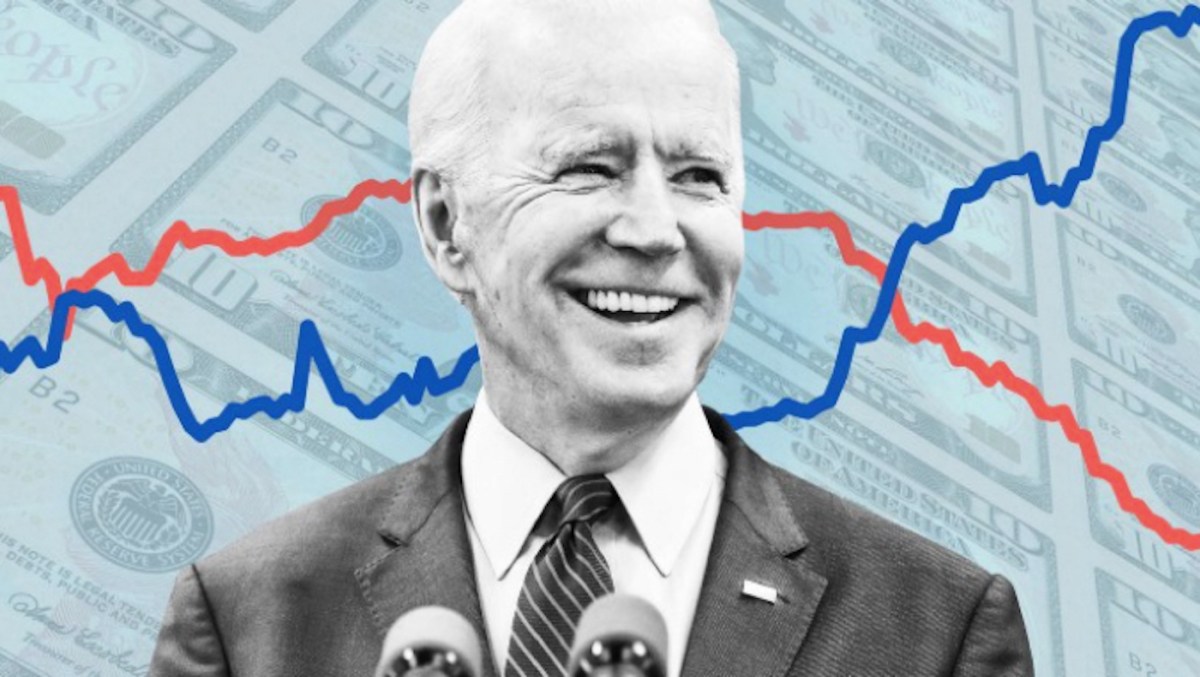[ad_1]
NEW YORK – The Biden administration’s US$1.9 stimulus package, adding to last year’s $2 trillion in Covid-19 related handouts, has the effect of feeding sugar to a diabetic. The patient is on a sugar high, but at risk of collapse.
The US doesn’t have the productive capacity to meet the demand created by the federal government and the Federal Reserve. The result is stagflation—a combination of inflation and economic weakness that we last saw during the Jimmy Carter administration in the 1970s.
There are two big differences between now and the 1970s, though. The first is the explosion of US government debt. The second is China.
Instead of throwing money out of helicopters, the US should invest trillions of dollars in infrastructure, R&D, selective production subsidies (for example semiconductors) and science education. As it is, the Biden administration is putting the credit and future borrowing capacity of the US at risk in return for a temporary boost to output.
Last week, the Philadelphia Federal Reserve Bank published the highest reading for its manufacturing diffusion index since 1972, right after the Federal Reserve reported a 3.1% fall in manufacturing output during February.
There’s a simple explanation for these wildly divergent readings: Higher input prices drove the jump in the Philadelphia Fed index. What’s worse, the difference between prices paid by manufacturers for inputs and prices received for finished products rose to the highest level since the Great Recession of 2009, as shown in the following chart:
The chart shows the difference between the proportion of manufacturers reporting higher output prices and the proportion reporting input costs. By a margin of 40% of all manufacturers, the preponderance of firms surveyed reports faster growth in input costs. That hasn’t happened since the aftermath of the Great Financial Crisis of 2008.
This is what recessions are made of. When a scissors opens between input costs and prices paid, manufacturers restrict operations rather than lose money.
But there is a critical difference between the deflationary recession of 2009 and the stagflation of 2021. In 2009, prices of inputs as well of finished goods both fell sharply. In 2021, they rose as the graphic below shows:
Faced with a widening gap between input costs and final prices, many manufacturers will choose to shut down production lines rather than lose money. That, as well as the disastrous Texas electricity blackout, explains why production fell: Consumers push back against higher prices while input costs push up the cost of production.
The US Consumer Price Index is rising at less than 2%, a number that the Federal Reserve seems to think charmed. But that’s an artifact of measurement.
The Bureau of Labor Statistics’ gauge of consumer inflation remains subdued in large part because the cost of renting homes has risen more slowly (about 2% a year) in recent months than previously, thanks to high unemployment. Shelter is nearly two-fifths of the CPI, and that keeps the index down.
The 2009 crisis came from the demand side. When the housing bubble collapsed, trillions of dollars of derivative securities backed by home loans collapsed with it, wiping out the equity of homeowners and the capital base of the banking system.
The 2021 stagflation—the unhappy combination of rising prices and falling output—is a supply-side phenomenon. That’s what happens when governments throw trillions of dollars of money out of a helicopter, while infrastructure and plant capacity deteriorate.
Chronic underinvestment in US plant and equipment as well as infrastructure has left American supply chains and transport networks strained.
The pundits blame cold weather in Texas and the subsequent electricity blackout for shortages of everything from plastics to semiconductors, but the problem arose because Texas failed to invest in frost-protection equipment for its energy sources.
Higher oil prices, to be sure, added to input costs early this year, but oil prices rose in part because US producers couldn’t ramp up production fast enough to meet the rise in demand late in 2020. Barely a third as many oil rigs are operating in the US today as in 2018.
Transportation costs have also pushed up the cost of inputs. America’s transportation network is the most dilapidated among all the major industrial nations. In late 2020 and early 2021, freight expenditures jumped even though the volume of freight remained below year-earlier levels.
The US simply hasn’t invested in productive capacity. Capital equipment orders excluding aircraft and the military are running at the same level as 1992 in real terms using the Producer Price Index for capital goods to adjust the nominal numbers. That’s barely half the previous peak level.
With production and transport capacity so constrained by chronic underinvestment, trying get more output out of the US economy by handing out stimulus checks is like sucking a golf ball through a garden hose.
The capacity isn’t there to meet the demand generated by trillions of dollars of so-called stimulus. That’s why US imports from China are up by almost 50% year-on-year, the biggest increase in history. Despite talk about decoupling, China is the only country that can produce high volumes of consumer electronics as well as medical equipment.
An increasing portion of Washington’s helicopter money is purchasing goods from China, which had the biggest export contribution to growth last year in decades. The Biden stimulus means more US debt, and more Chinese dominance of world trade.
[ad_2]
Source link













